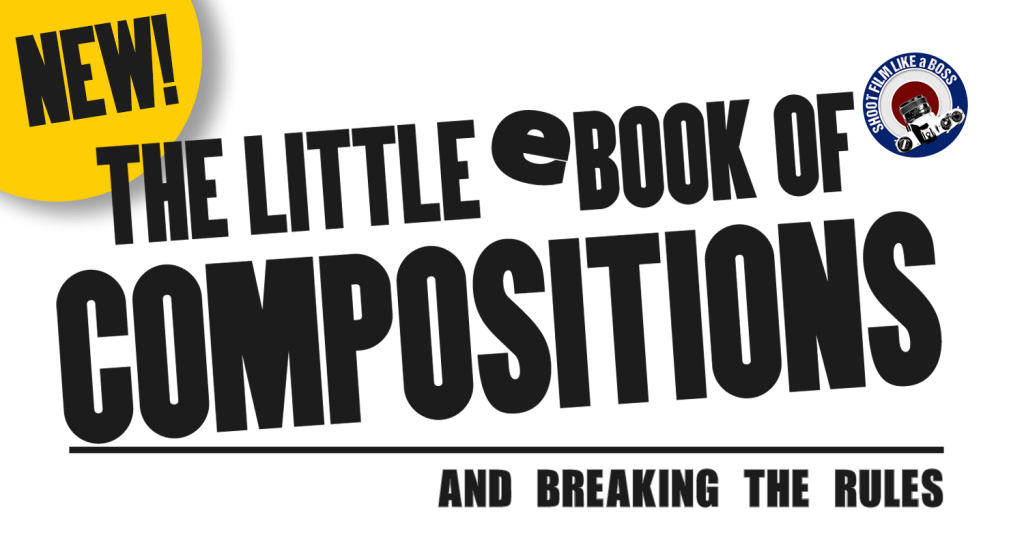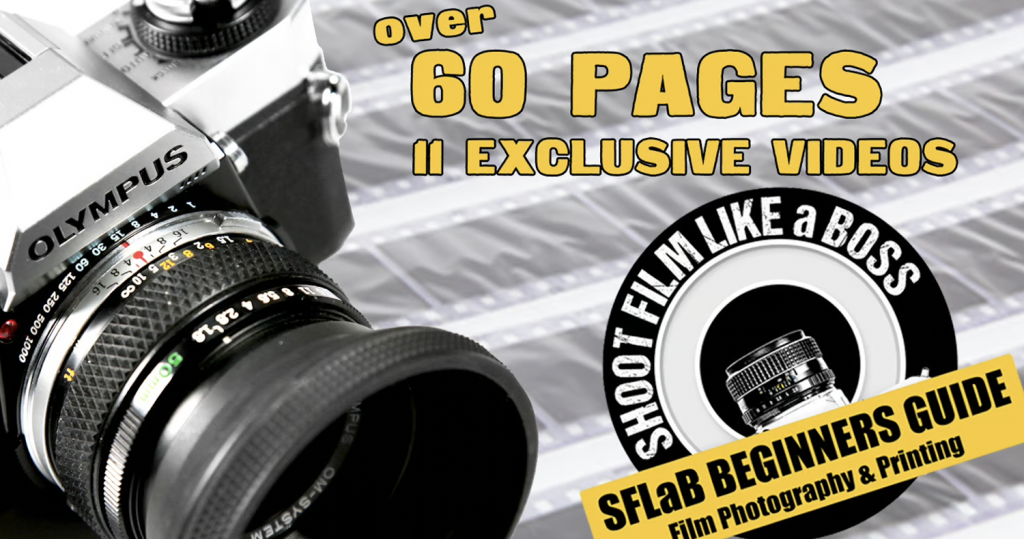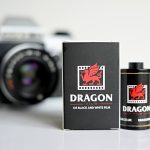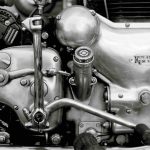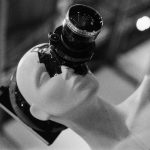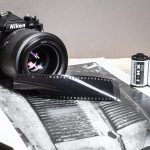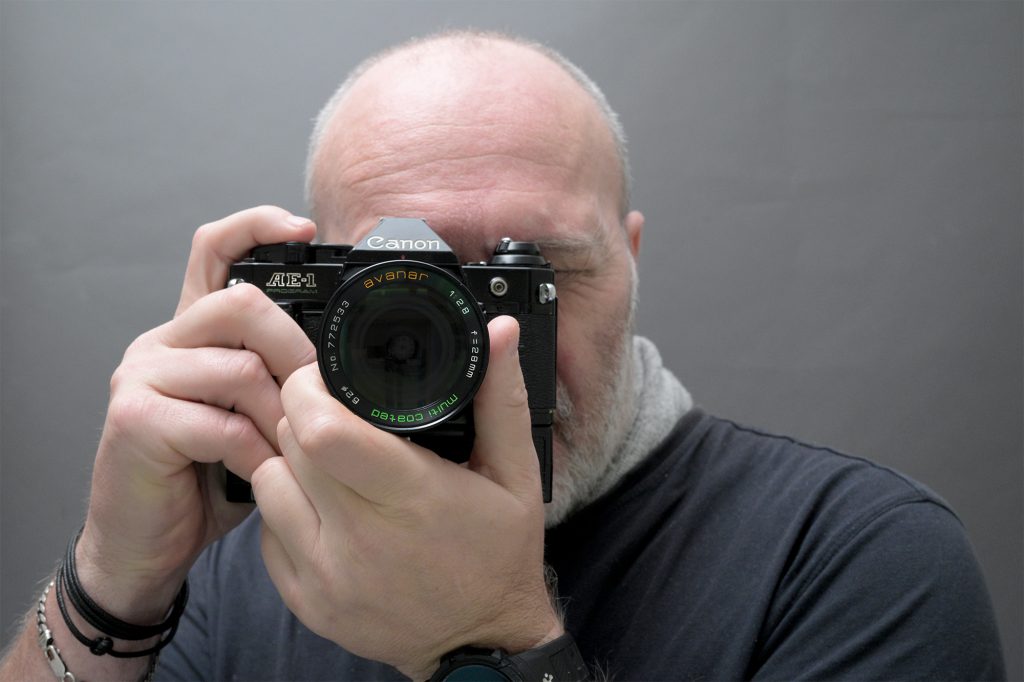
The Canon AE-1 Program: A Timeless Classic
The Canon AE-1 Program, released in 1981, revolutionized the world of 35mm film photography. Combining innovative features, ease of use, and remarkable affordability, this camera made high-quality photography accessible to a wider audience than ever before and became a runaway success, selling millions of units globally. Its enduring appeal lies in its unique blend of simplicity and functionality
I’m lucky to have this one in my hands to play with. It’s not mine. I am looking over it and making sure it works before it is sold on. It was donated to a local charity, yet to be sold! Probably on ebay.
And so far so good! No leaks or shutter problems or mirror lock ups! However, the light meter appears to be slightly out. See my tests on my YouTube Channel
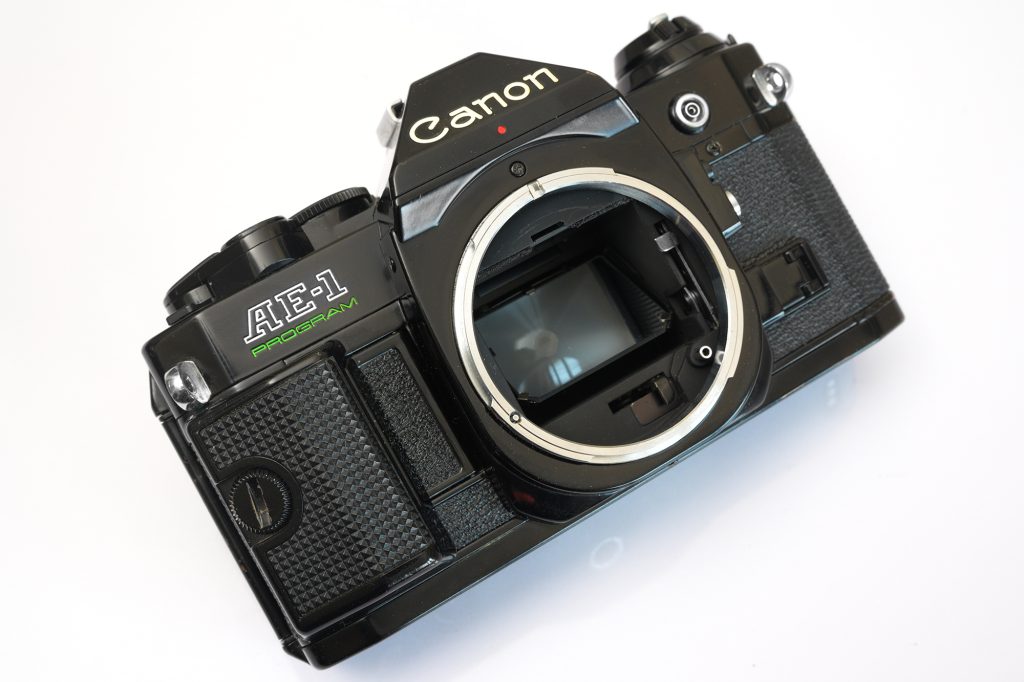
Canon designed it specifically with two groups in mind:
- Photography Enthusiasts: Beginners and hobbyists sought a high-quality camera that wouldn’t overwhelm them with complicated controls. The ease-of-use, Program mode, and clear feedback in the viewfinder made the AE-1 Program the ideal guide for people wanting to improve their photography skills.
- Experienced Shooters: Seasoned photographers also appreciated the AE-1 Program. Its shutter priority mode allowed full creative control over shutter speeds for specific effects. Moreover, it served as a lightweight and affordable backup body for those with more complex pro-level gear.
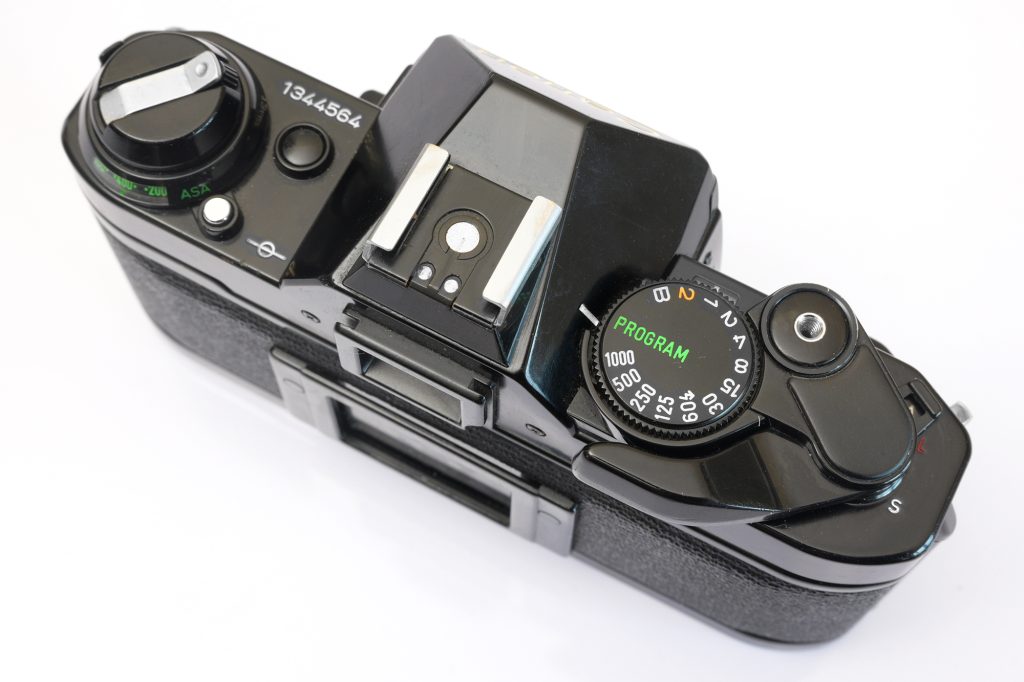
Using the Camera
Despite it being complex for the time it is very easy to use in most enthusiasts hands. Unless the battery runs out! Yup. It needs a battery to function. No battery and the camera won’t even fire.
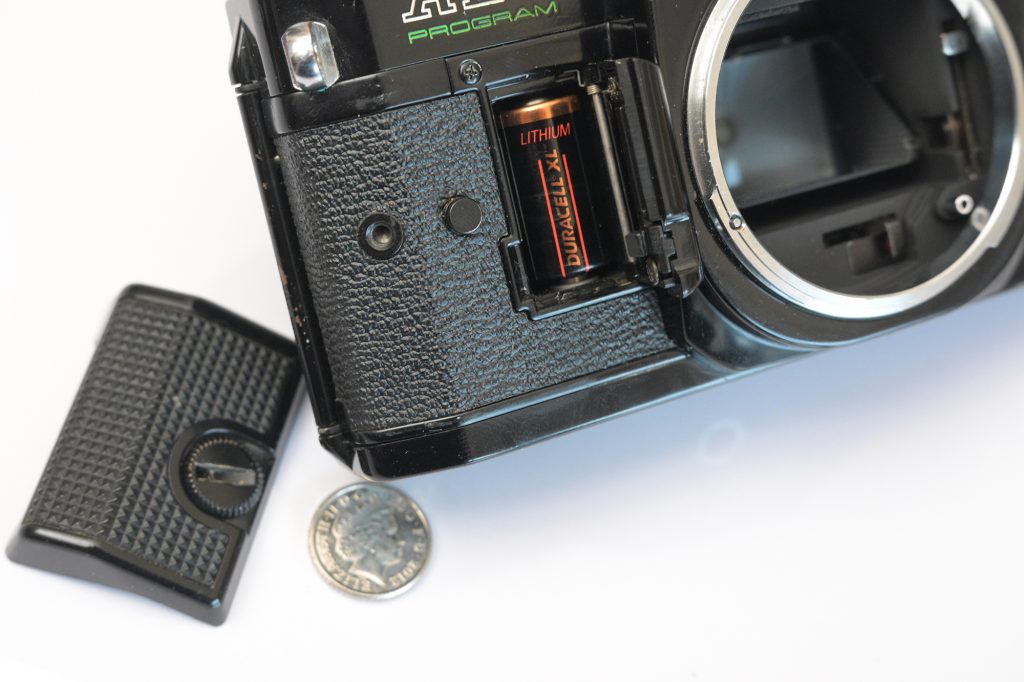
But with a fully loaded (4LR44) Battery, available online, the camera comes to life and offers anyone using the camera a no nonsense photography experience.
The camera is comfortable to shoot, like many other cameras of similar design, and for extra comfort the camera allows the Canon Power Winder A to be fitted for a better grip and the added bonus of automatically advancing the camera.
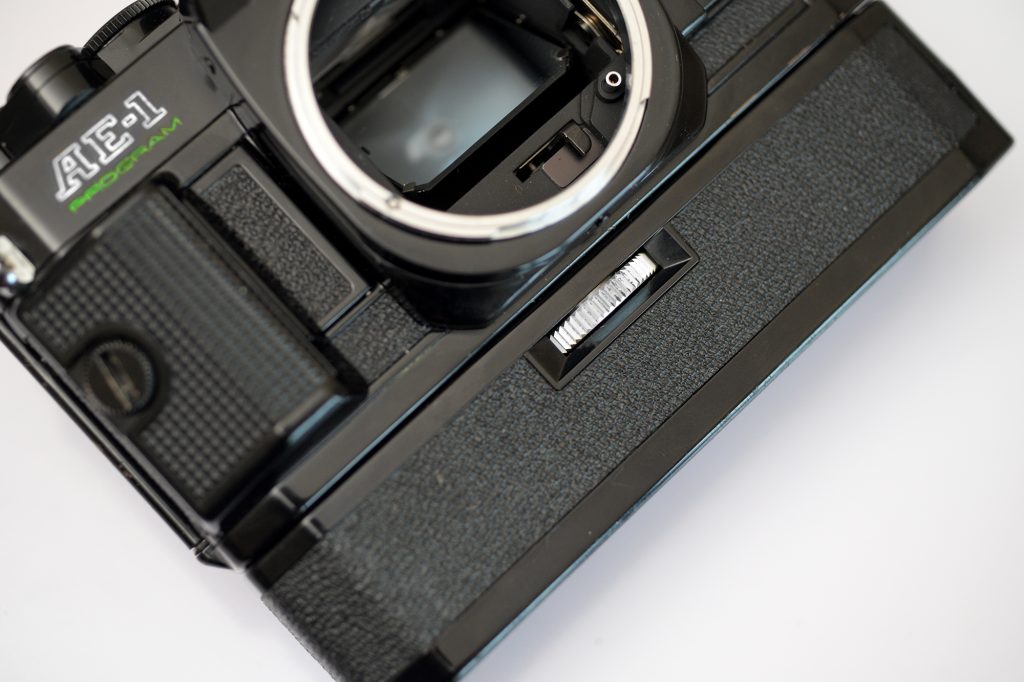
The speeds range from 2 Seconds all the way to 1/1000th and has Bulb Mode too for long exposure photography and has an electromagnet controlled cloth curtain shutter that limits top shutter speed to 1/1000 and a slow flash sync speed of 1/60 second. I’m not sure how this curtain holds up to those horrid sunlight burnt pinholes you see in other cloth shutters but with care should last a lifetime!
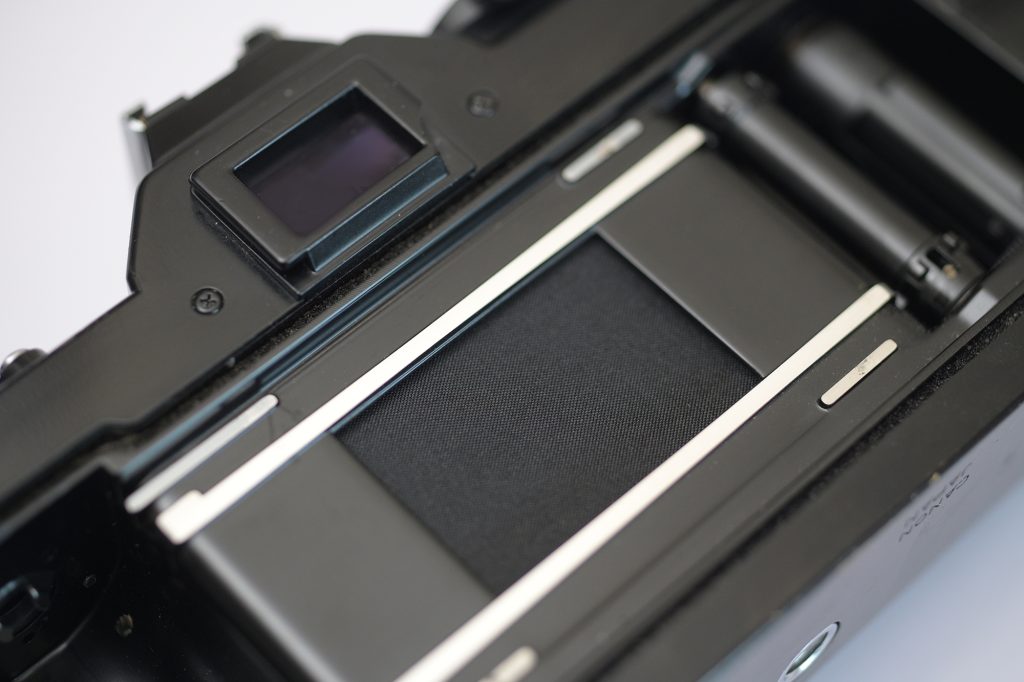
Shooting Modes (Program)
Fully Manual
You can use the camera in fully manual mode if you’re feeling confident meaning you control the Shutter Speed and the Aperture for your exposure.
Inside the viewfinder a little “M” is visible warning you that you are in DIY mode.
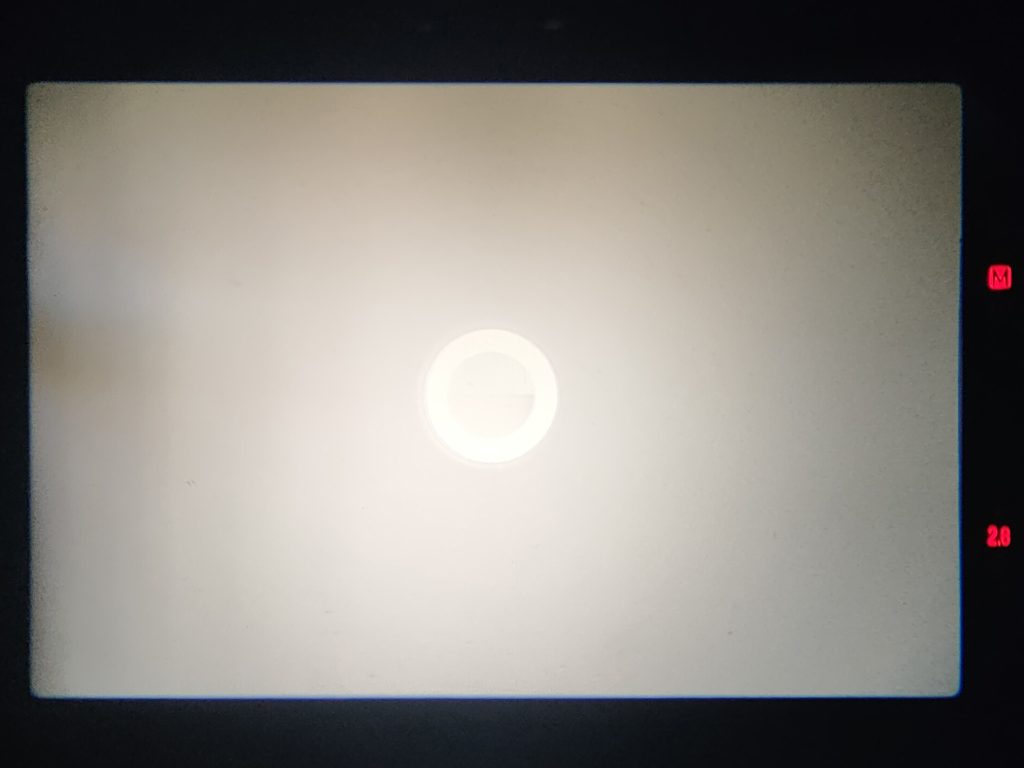
Also inside the viewfinder the camera will tell you the best aperture to use for the speed selected in that scene. So for example if you choose 1/125th shutter speed and you choose F11 on the aperture ring and inside the viewfinder it says F5.6 that means the camera is telling you the correct exposure. You can either adjust the aperture or shoot as you were. The camera won’t override your judgment in fully auto mode.
Program Mode
Or you can switch it into “Program” mode and choose the “A” Setting on the lens, (or indicator on other FD lenses), and the camera turns into a highly effective automatic exposure camera where it will select the best shutter speed and aperture for the scene you want to shoot.
A little “P” is seen in the viewfinder to show you are in Program Mode.
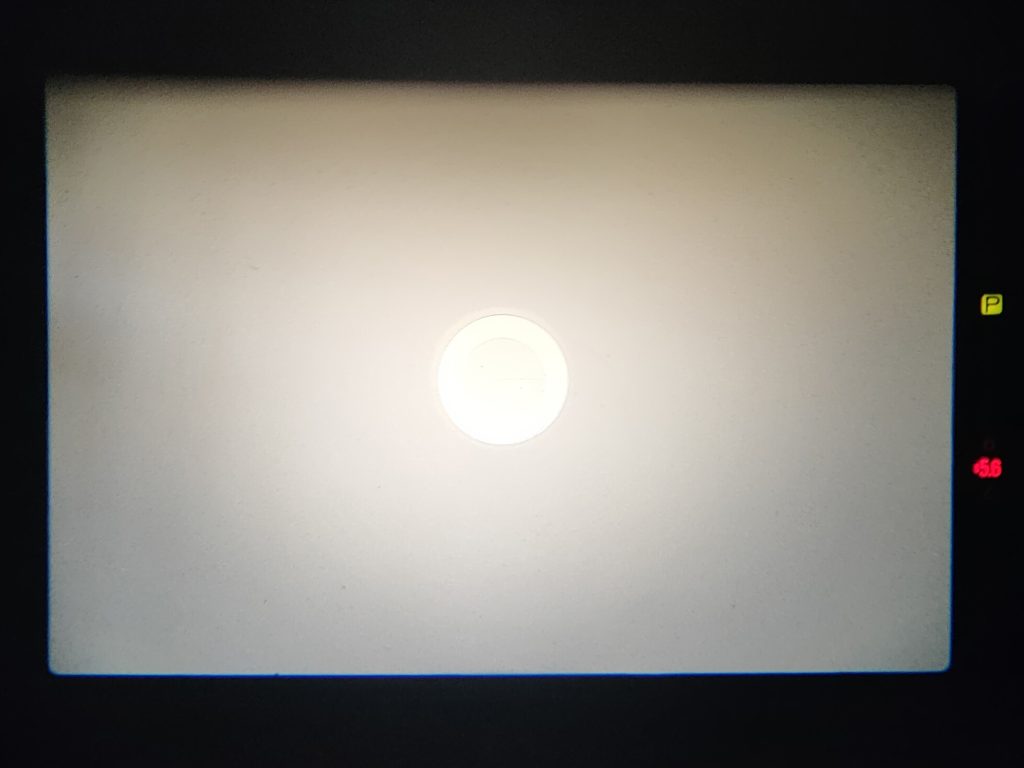
Shutter Priority
Or you can take it off program mode and select whichever Shutter Speed you want and the camera will decide the best Aperture for you. For this to work you need to set the aperture ring on the lens to “A” or which other indicator is on your lens.
There is NO Aperture Priority on this camera. Meaning that whatever you do in any of the Auto Functions the camera will always select the aperture for you.
What does the shutter speed do?
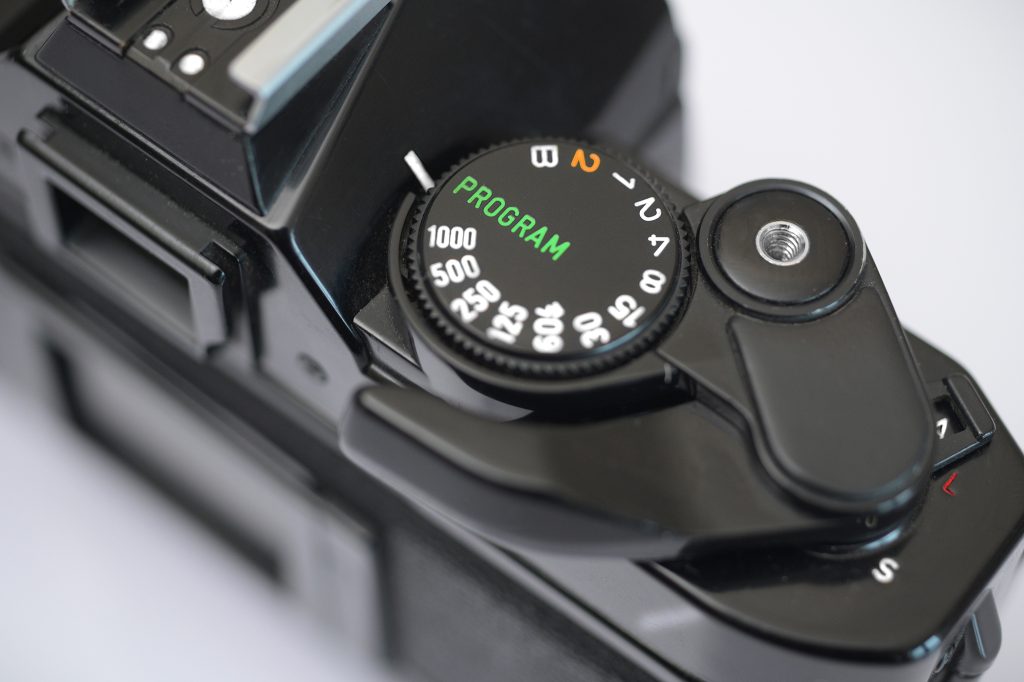
On the shutter speed dial there are numbers. They are to select the speed of the cameras shutter curtain opening and closing in fractions of a second. If you choose 1 Second (1). Then when you take a picture the cameras shutter curtain will remain open for 1 full second. Thats quite a long time in photography.
Imagine you are taking a photograph of a person walking their Dog. If the camera exposed them for a whole second all you would see would be a blurry mess. Because for that whole second the film was being exposed and anything moving in the scene, including your camera shake, and would imprint on the film as blurry or streaky.
That speed is perfect if you are using a tripod and want cars in motion. Your scene would be perfectly still and the cars would have this streaking effect.
If you choose 1000, which means 1 thousandth of a second, the cameras shutter curtain would open and close faster than your eye can blink. Very fast! Meaning whatever you take a photograph of it will literally be frozen in action.
Most of the time 1/250th is perfect for freezing people walking if you were doing street photography for example. Or a portrait 1/125th would be adequate where your subject isn’t moving.
The photograph below was taken at 1/125th of a second. You can see the person holding the child is slightly blurry. They moved toward the fencing pretty quick. Quicker than the people walking in the background. If that was taken at 1/250th they would have more likely have been sharp.
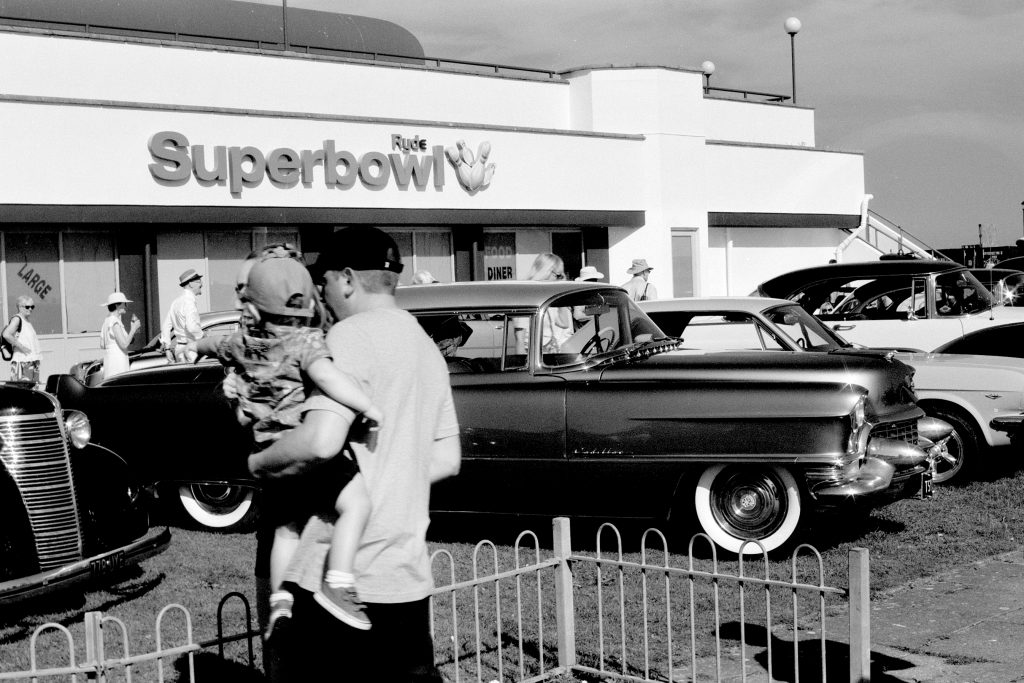
Once you start to drop below 1/125th to say 1/60, 1/30 and especially 1/15th if you have not got a steady hand then you’ll need a tripod to avoid blurry photographs from your hand shake.
And that is what this camera is all about. Shutter Speed Priority. You can be as creative as you like with the shutter speed and the camera will always correct the exposure by controlling the aperture for you. If the scene is too dark or too bright the camera will still let you take a shot but will give you warnings inside the viewfinder.
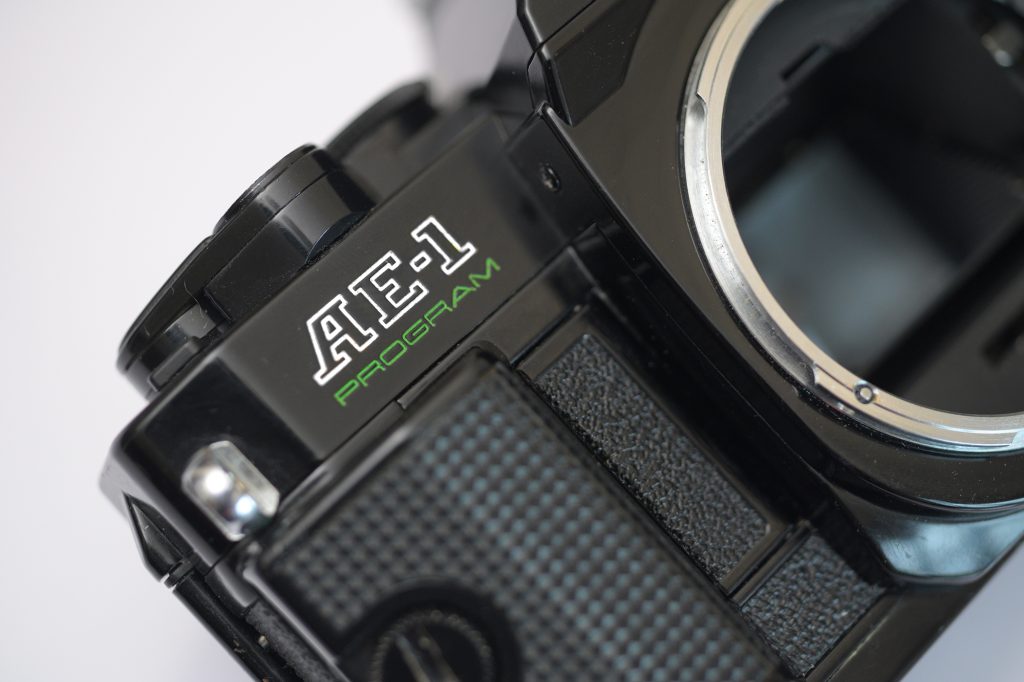
Exposure Warnings
If you are using the camera in Fully Manual or Shutter Priority mode the camera has warnings inside the viewfinder for overexposure and underexposure.
In Fully Manual mode and Shutter Priority mode, if your scene is too dark for the settings dialled in to the camera the largest aperture will flash inside the viewfinder. F2.8. f1.8, f1.4, f1 depending on your lens.
If your scene is too bright the smallest aperture will flash, F32.
Also it’s worth knowing that if you are in fully auto mode (Program) and the scene is not so bright and the camera needs to select a shutter speed less than 1/30th of a second a little “p” will flash inside the viewfinder to warn you there is a possible chance of camera shake.
Other than that, in program mode, you don’t have a clue what shutter speed the camera is set to. It only tells you the aperture. Which I think is a shame.
And with all this the ISO/ASA film selector ranges from 12-3200.
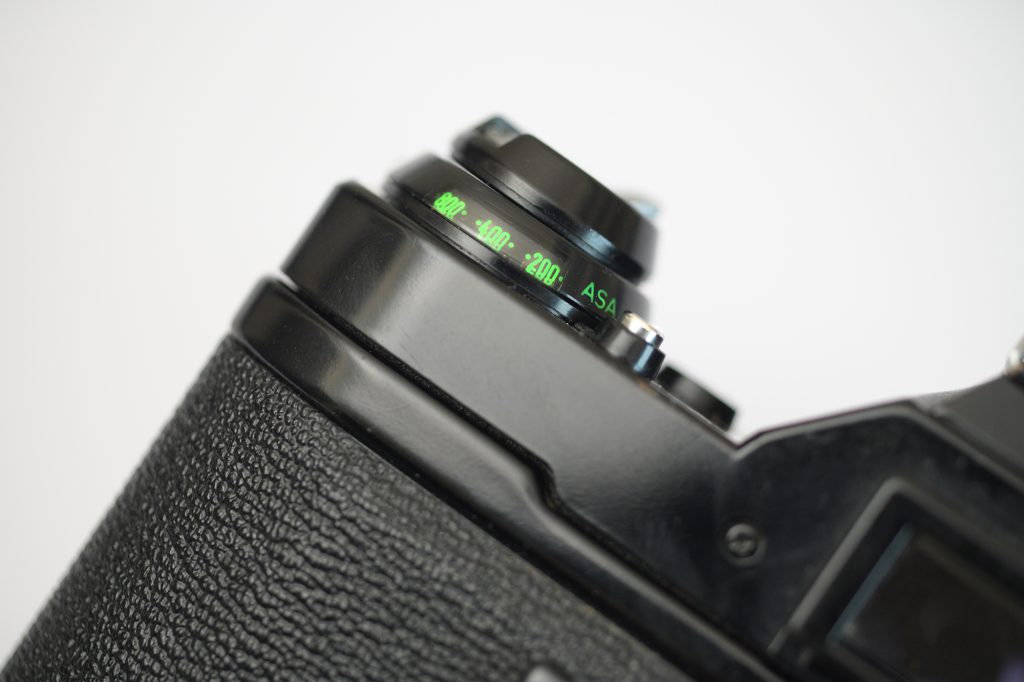
Viewfinder
The AE-1 Program supports interchangeable focusing screens and there are eight different screens available including the standard screen which is on this camera with a Split Microprism rangefinder. Unlike the Canon A1 which also has interchangeable focus screens and had to be replaced by a specialist the AE-1 Program can easily be changed by the user.
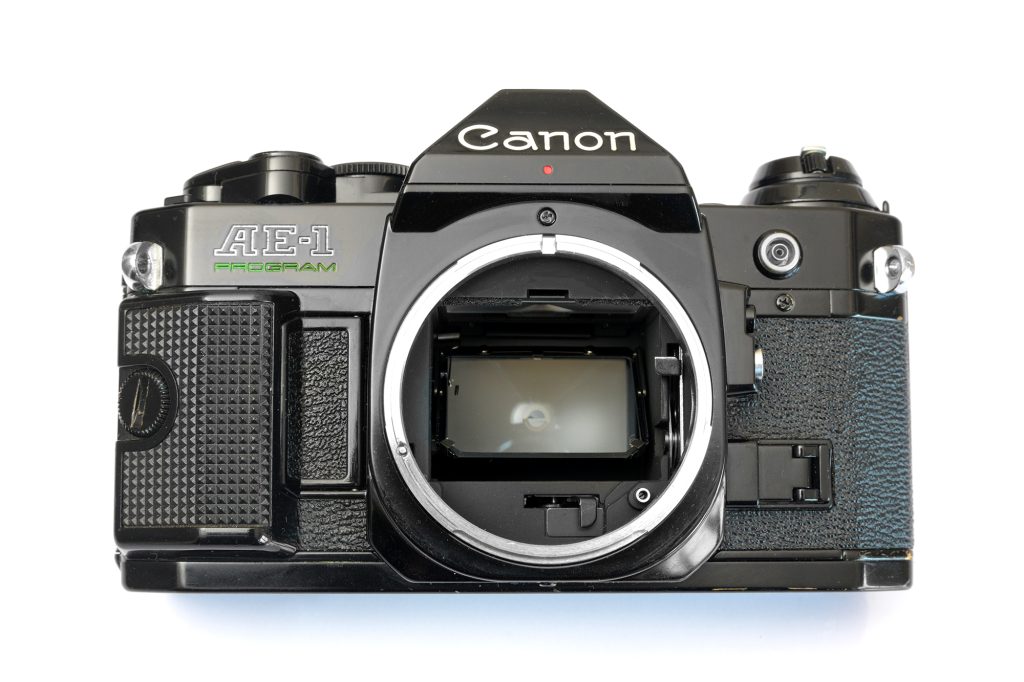
Depth of Field Preview
The DOF preview button, which you can see next to the lens mount is a push and lock system meaning you can lock it in place and take your finger off.
And whilst we can see the front of the camera it’s worth mentioning it takes Canon FD Mount Lenses for which there are plenty out there to find. Unfortunately this camera came with no original Canon lenses.
Top Features
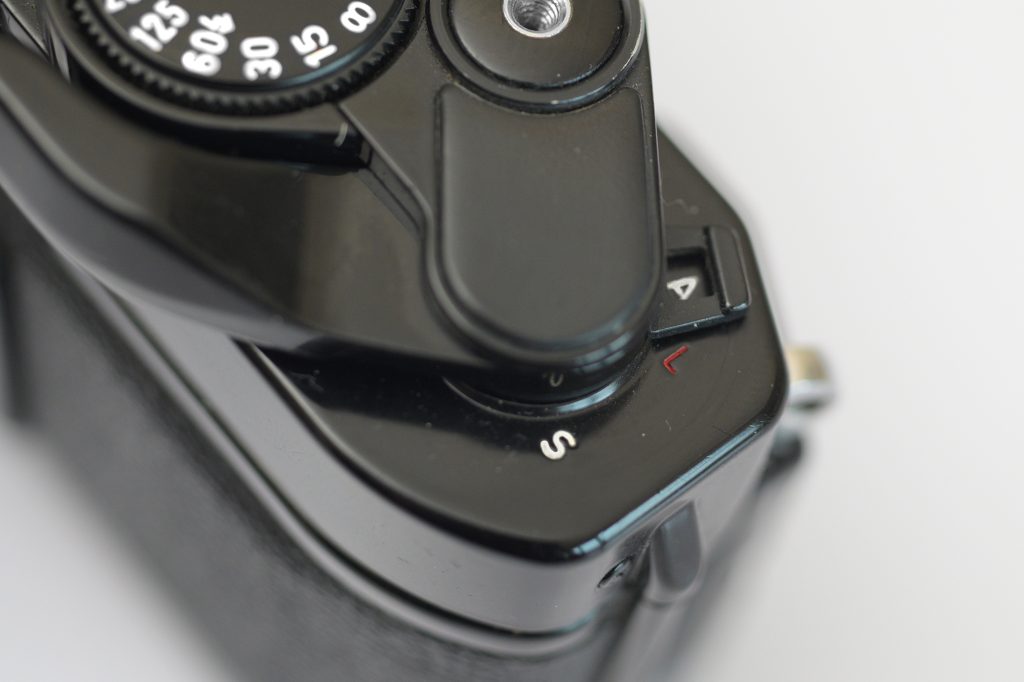
Next to the advance lever you will see three function. A, L and S.
A is pretty much unlock. L is Lock and S is the Self Timer. And the self timer is about 20 seconds. And the button shown below is for cancelling the self timer after it’s been started.
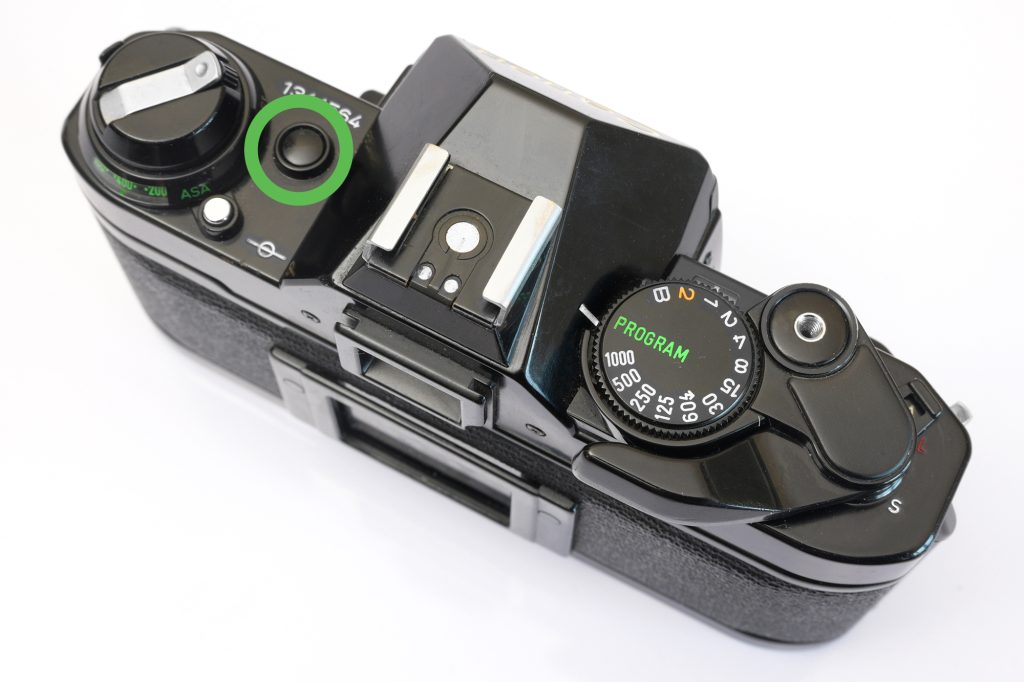
Overall Thoughts
This camera is a timeless classic and a well made camera and gives you a nice shooting experience without the hassle of trying to guess the metering or camera settings. Just point, focus and shoot!
Whilst the earlier model, the A1 offered Aperture Priority and Shutter Priority with digital style viewfinder I am finding it hard to understand why Canon took Aperture Priority away on this camera.
Despite its age and lack of Aperture Priority, the Canon AE-1 Program remains a highly sought-after camera, attracting both film photography veterans and a new generation of analog enthusiasts. The resurgence of interest in shooting film adds a dimension of authenticity and nostalgia that can’t be replicated digitally. If you come across a well-maintained AE-1 Program, don’t hesitate – snap it up and see why this camera left an enduring mark in photographic history!
Through its success, the AE-1 Program earned its place as one of the most iconic film cameras of all time. Its blend of features, aesthetic, and user-friendliness resonated across generations of photographers.
